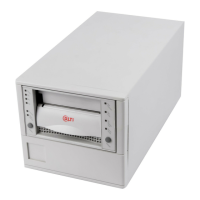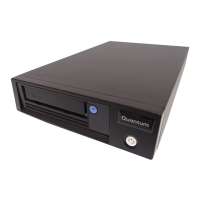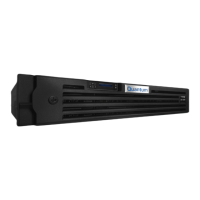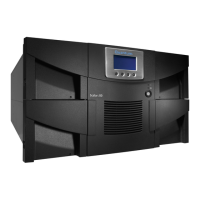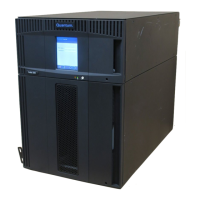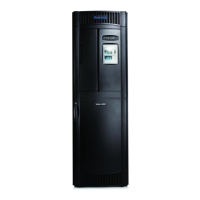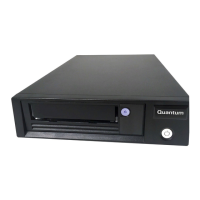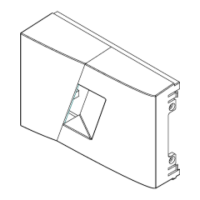Glossary
G-6 Quantum Fireball Plus LM 10.2/15.0/20.5/30.0 GB AT
MTTR – Mean Time To Repair. The average
time it takes to repair a drive that has failed
for some reason. This only takes into
consideration the changing of the major
sub-assemblies such as circuit board or
sealed housing. Component level repair is
not included in this number as this type of
repair is not performed in the field.
O
OO
O
OVERHEAD – The processing time of a
command by the controller, host adapter or
drive prior to any actual disk accesses taking
place.
OVERWRITE – To write data on top of
existing data, erasing it.
OXIDE – A metal-oxygen compound. Most
magnetic coatings are combinations of iron
or other metal oxides, and the term has
become a general one for the magnetic
coating on tape or disk.
P
PP
P
PARTITION – A portion of a hard disk
devoted to a particular operating system and
accessed as one logical volume by the
system.
PERFORMANCE – A measure of the speed
of the drive during normal operation.
Factors affecting performance are seek
times, transfer rate and command overhead.
PERIPHERAL – A device added to a system
as an enhancement to the basic CPU, such as
a disk drive, tape drive or printer.
PHYSICAL FORMAT – The actual physical
layout of cylinders, tracks, and sectors on a
disk drive.
PLATED MEDIA – Disks that are covered
with a hard metal alloy instead of an
iron-oxide compound. Plated disks can store
greater amounts of data in the same area as
a coated disk.
PLATTER – An disk made of metal (or other
rigid material) that is mounted inside a fixed
disk drive. Most drives use more than one
platter mounted on a single spindle (shaft)
to provide more data storage surfaces in a
small package. The platter is coated with a
magnetic material that is used to store data
as transitions of magnetic polarity.
POH – Acronym for power on hours. The
unit of measurement for Mean Time
Between Failure as expressed in the number
of hours that power is applied to the device
regardless of the amount of actual data
transfer usage. See MTBF.
POSITIONER – See actuator.
R
RR
R
RAM – Acronym for random access
memory. An integrated circuit memory chip
which allows information to be stored and
retrieved by a microprocessor or controller.
The information may be stored and retrieved
in any order desired, and the address of one
storage location is as readily accessible as
any other.
RAM DISK – A “phantom disk drive” for
which a section of system memory (RAM) is
set aside to hold data, just as if it were a
number of disk sectors. The access to this
data is extremely fast but is lost when the
system is reset or turned off.
READ AFTER WRITE – A mode of
operation that has the computer read back
each sector on the disk, checking that the
data read back is the same as recorded. This
slows disk operations, but raises reliability.
READ VERIFY – A disk mode where the
disk reads in data to the controller, but the
controller only checks for errors and does
not pass the data on to the system.
READ/WRITE HEAD – The tiny
electromagnetic coil and metal pole piece
used to create and read back the magnetic
patterns (write or read information) on the
disk. Each side of each platter has its own
read/write head.
REMOVABLE DISK – Generally said of
disk drives where the disk itself is meant to
be removed, and in particular of hard disks
using disks mounted in cartridges. Their
advantage is that multiple disks can be used
to increase the amount of stored material,
and that once removed, the disk can be
stored away to prevent unauthorized use.
